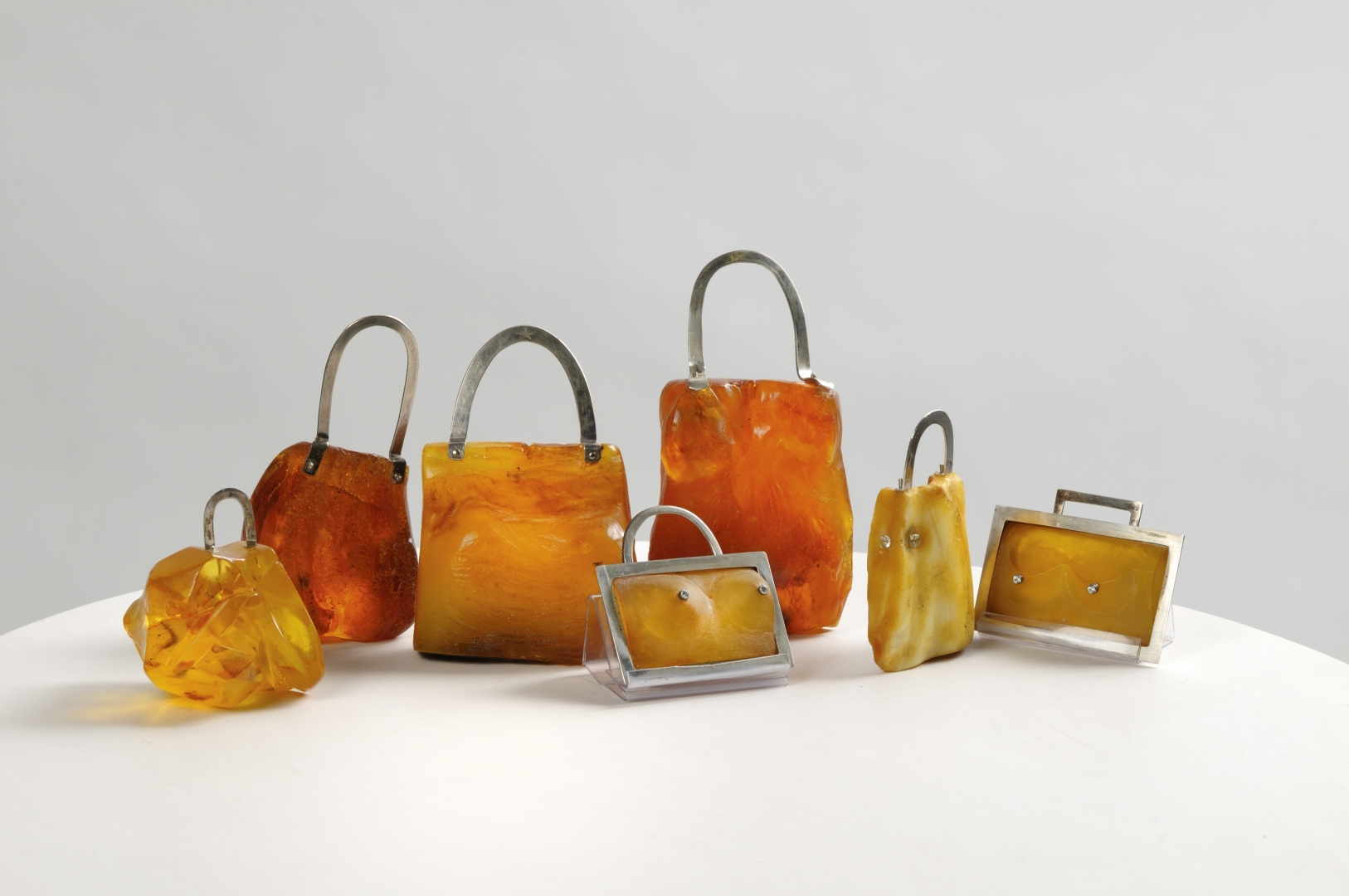Küttner graduated from the Estonian State Art Institute (now the Estonian Academy of Art) in 1967 and worked until 1976 as a designer in the Tallinn Jewellery Factory. Her famous cutlery series Elegant and Arnica, which represent the very best examples of Estonian industrial design, are nowadays still in production. Elegant was so popular at its peak that a million teaspoons of the series were produced a year. During the same period, Küttner began her active pursuits in free creative art, jewellery and large decorative metal forms, and started regularly displaying her works at exhibitions. She has mentioned that her time at the Tallinn Jewellery Factory was like being in a second university for her, as it taught her to boldly search and experiment, as well as bring her ideas to life. Beginning in 1976, Küttner also worked for several decades as a lecturer at the Estonian Academy of Art.
Since the late 1970s, Küttner has been dedicated to plique-à-jour, which is technically very demanding and also quite rare in Estonian art. She was fascinated by the technique, which is similar to stained glass, and used it in her jewellery. It was a challenge for her to strive for lustrous and transparent enamel surfaces of her large jewels on the frameworks of silver wire. In the 1990s, besides her large decorative jewellery in plique-à-jour technique, she created fashion collections, which were displayed in Paris and New York.
Küttner is mostly interested in jewels as powerful messengers. The turn of the century witnessed quite a radical change in her oeuvre: the artist started making refined conceptual jewellery installations, creating manifold meaningful connotations and presenting her jewels as if in dialogue with visual quotations from the history of culture and art. While telling stories through her jewellery, she also purposefully shifts contexts and plays with words and their ambivalence.
Küttner’s jewellery series Dedicated to Ede Kurrel was created in 1997. The silver filigree hat and pochettes hiding jewels in them are like metaphorical portraits of Ede Kurrel, one of the founders of the Estonian jewellery art. It is an homage to her teacher and demonstrates Küttner’s dedication. With this series, the handbag as a polysemantic symbol became one of the key motifs in Küttner’s oeuvre. The same series introduced the whole topic of dedications, which still fascinate her. Thus she has addressed women in Estonian culture, depicting them as Estonian madonnas, as well as honouring many other creative people who have been significant for her. Küttner’s creative dialogue with Paul Delvaux has been quite long-standing. She has been fascinated by both Delvaux’s gentle women’s poetic stance in its telling emptiness and by titles of Delvaux’s works: Küttner uses the same titles and, with the metaphoric meanings hidden in her jewellery, actively shifts interpretations of Delvaux’s paintings.
Besides gems, Küttner has been fascinated by Estonian limestone, with its geologic affluence and compelling development. However, the artist’s real signature material is amber. When starting her career as a university lecturer, Küttner in 1979 selected amber as her main topic of research, and in 2022 she compiled a book on amber. Amber has inspired her as its development hides various layers of different eras, and its later folkloristic meanings and the unique colouring of every single piece have inspired her to create various sets of jewellery and conceptual series.
Küttner, who has expert knowledge of different jewellery techniques, in 2010 moved from her fragile silver threads to the rust of bog iron, creating monumental metal paintings with rusty surfaces. To create rust, she purposefully uses only foodstuffs and domestic cleaning materials, adding acrylic paints to stop the process of corrosion.
Urve Küttner’s manifold and richly imaginative oeuvre leaves its admirers sufficient space to seek inspiration with her. Küttner was presented the Kristjan Raud Art Award in 1998, and twice – in 2001 and 2016 – she has been awarded the Ede Kurrel Art Prize.
The works displayed at the exhibition come from Urve Küttner’s collection, if not stated otherwise on the labels.
Curator: Kersti Koll
Exhibition design: Villu Plink
Graphic design: Külli Kaats
Exhibition team: Richard Adang, Ivika Arumäe, Klaire Kolmann, Marit Must, Alar Nurkse, Kristina Papstel, Kaisa Piia Pedajas, Sirje Säär, Laura Tahk, Allan Talu, Annika Teras and Karin Vicente
We thank: Cultural Endowment of Estonia, Estonian Artists’ Association’s Collection, Estonian Museum of Applied Art and Design, Linda Elken, Tiina Grepp, Sirje Helme, Miralda Kangilaski, Tiiu Kangur, Aet Kuuskemaa, Riina Kütner, Harry Liivrand, Karin Paulus, Anu Raud, Maret Sõer, Kersti Tiik, Marrit Traksmann, Heie Treier




